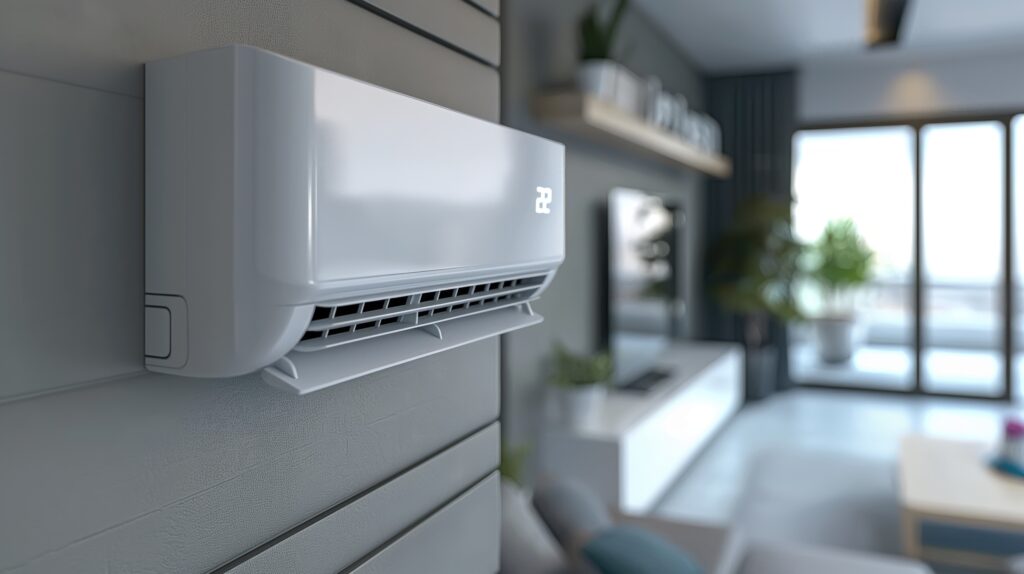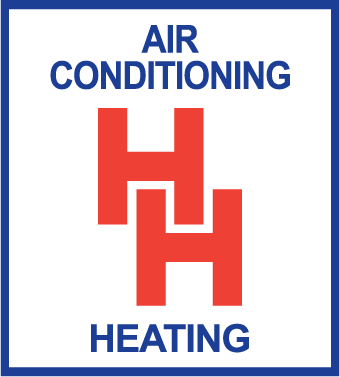
Your entire home should be a sanctuary that’s warm and toasty in the winter season and cool and comfortable in the summer. However, families who live in some two-story homes find the upper floor is stubbornly hotter or colder than the rooms on ground level.
This could simply be due to the fact most thermostats in a house are on the ground floor, which is where people spend the greatest amount of time—in the living room, kitchen, etc.—so it makes sense to set the temperature according to how it feels on the first floor.
However, temperature differences between the upstairs and downstairs could also be because of problems with your HVAC system. Some of these difficulties can be resolved somewhat quickly while others might necessitate more extensive and costly fixes. Here, the specialists at H & H Service Company will help you determine why the upstairs of your home is hotter than downstairs, or vice versa.
Why Is My Upstairs So Hot?
The phenomenon of the upstairs of a two-story home feeling hotter than the downstairs can be traced to several factors. Number one, heat rises, so it’s common for the second floor of a home to get hotter than the first floor. Lack of insulation in the attic or roof can make this worse by letting heat transfer from the roof into the upstairs rooms.
Another common reason is that the air conditioning is not strong enough to cool the entire home, causing it to fight to cool the upstairs effectively.
To deal with these issues, homeowners could put in additional insulation in the attic and make sure their home has adequate ventilation. If there’s concern the air conditioning unit is the ideal size for the home, call an experienced HVAC company like H & H Service Company to inspect the unit. A skilled professional also can help locate a unit that’s better suited for your home if you are considering air conditioning installation or replacement.
Why Is My Upstairs So Cold/Not Heating?
When the downstairs of your home is warm, but it’s freezing upstairs, that makes for a frosty night for anyone whose bedrooms are on the upper floor. The most frequent reasons an upstairs not heating like it ought to are the insulation levels and the ductwork.
Inadequate insulation lets cold air to seep through the home’s attic or walls and contribute to heat loss, causing colder temperatures on the upper levels. It’s essential to make sure your home has a thick, level layer of insulation in the attic and proper insulation in the walls to keep the cold out and the heat inside.
The ductwork in a home plays a fundamental role in circulating conditioned air throughout different rooms of the building. However, issues with the ductwork can cause the upstairs being colder than the downstairs. A common reason for this is improper airflow balance. The ducts may not be the right size or in the appropriate layout, causing an uneven distribution of air between the floors. This can cause more warm air to flow downstairs, causing insufficient airflow—which is the heated air—on the upper story.
Another possible issue with the ductwork is the layout of the supply and return vents. If there are fewer vents on the upper floor or they aren’t well installed, it can restrict air circulation and cause inferior heating or cooling. In addition, leaks or gaps in the ductwork can cause air loss, reducing the overall efficiency of the HVAC system and making the temperature difference more pronounced.
To find out why the upstairs is colder than the downstairs, homeowners should hve their ductwork inspected by trusted HVAC pros like the team at H & H Service Company to identify any imbalances, leaks or inadequacies. Sealing leaks and installing more vents or adjusting existing ones can help improve airflow and ensure a more consistent temperature balance between the upstairs and downstairs.
How You Can Fix a Hot or Cold Upstairs?
If your upstairs is hotter or colder than the lower floors of your house, an HVAC zoning system could be a highly effective solution.
An HVAC zoning system breaks the residence into different zones, which each have their own thermostat and damper system so the homeowner can customize the heating or cooling of each zone.
This system can be particularly useful in instances where the upstairs of a multi-story home is too hot or too cold while the main floor is comfortable. By investing in a zoning system, homeowners can control the temperature independently in each zone, allowing them to address specific hot or cold spots effectively.
To learn more about an HVAC zoning system in Mechanicsburg, call H & H Service Company. We’ve created and installed customized home comfort plans for many community members and are happy to show how an HVAC zoning system could work in your home.
Why Is My Upstairs So Humid?
In addition to the upper story being hotter or colder than the rest of the house, another problem in multi-floor homes is when the higher levels are more humid than the lower level.
A frequent reason for excess upper floor humidity is weak ventilation on the upper floor, which can produce increased humidity levels. As is often the case with temperature differences between floors, poor insulation or sealing in the attic or walls may allow warm, humid air from outdoors infiltrate the upstairs rooms. Plus, if there are any leaks or plumbing problems on the upper floor, that can also create excessive moisture in that area of a home.
To manage humidity problems, homeowners can improve ventilation by installing fans or opening windows to promote airflow. Proper insulation in the attic and better sealing the attic and walls can help protect against external moisture from entering the upstairs. Locating and repairing any leaks or plumbing issues is also imperative.
Depending on the levels of moisture found in the home, a whole-home dehumidifier could be another helpful tool to manage humidity in the residence.

